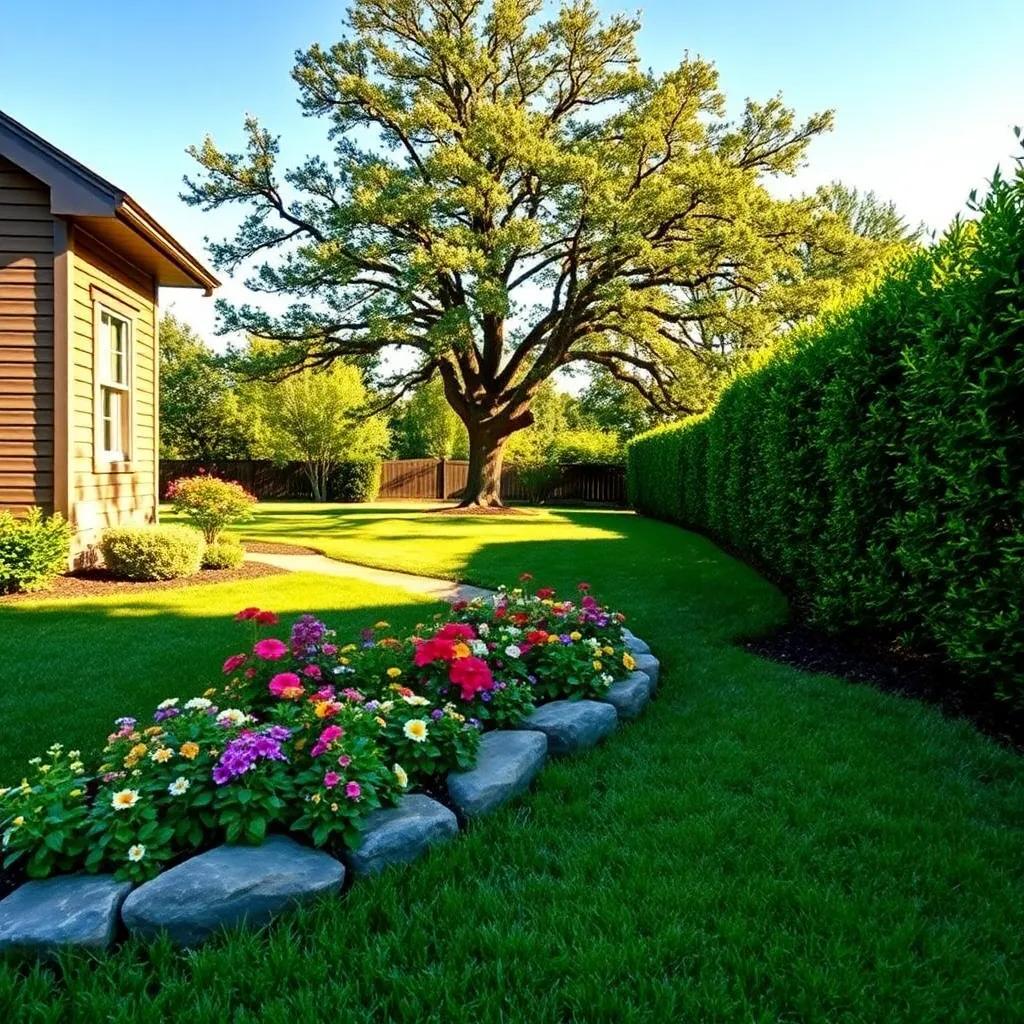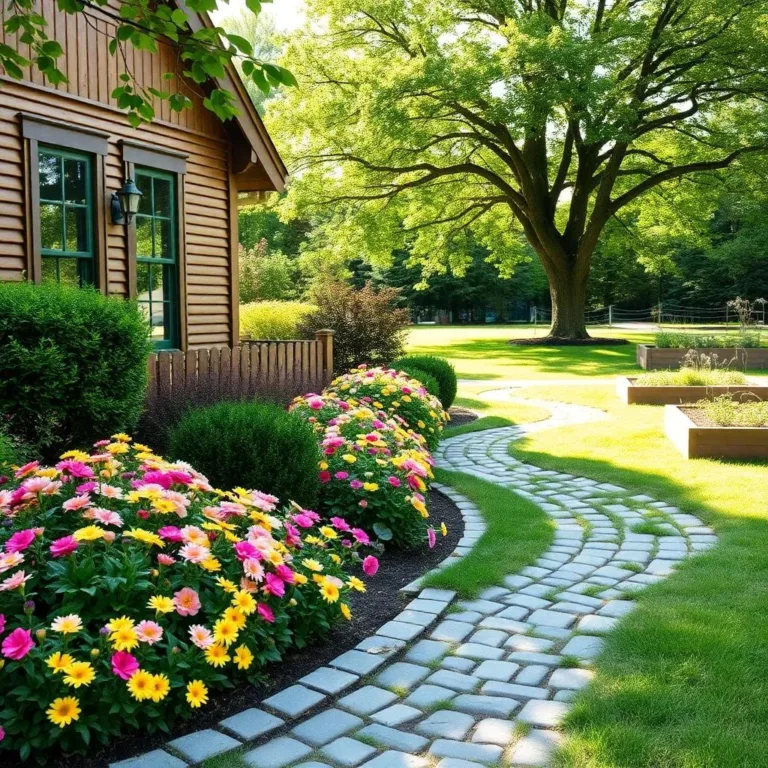Are you ready to transform your outdoor space into a stunning paradise? I love the feeling of having a beautifully landscaped yard, but there’s more to it than just pretty flowers! From smart planting distances to effective pest control and easy maintenance tips, I’m here to share my favorite strategies that will make your landscaping both beautiful and hassle-free! Let’s dig in! 🌼✨
Property Line and Setback Regulations
When planning your landscaping, one of the first things to think about is property line regulations. These rules can help you avoid any headaches with neighbors or local authorities! So, what exactly do I mean by that? Well, every piece of land has boundaries, and those boundaries often come with specific guidelines about how close you can place your plants, fences, or structures.
Here are a few things to keep in mind:
- Check Local Laws: Before you start digging, take a moment to check the local ordinances. Many cities and homeowner associations have specific rules, known as setback regulations, which dictate how far landscaping features must be from property lines. You don’t want to plant a beautiful flower bed only to find out it’s too close to the edge!
- Avoid Neighborly Disputes: Maintaining a respectful distance not only keeps you in line with the law but also helps maintain a good relationship with your neighbors. Nobody wants to argue over an encroaching bush or tree!
- Pretty and Practical: When you consider these setbacks, think about how you can make your landscaping both beautiful and functional. Use those boundaries to craft a design that flows, perhaps by creating a garden path or a cozy seating area that aligns with the rules.
So, before you bring out the shovels and trowels, take a little time for research! It’ll save you the trouble later and keep your garden dreams blooming. Plus, you’ll feel great knowing you’re following the rules while creating an amazing outdoor space!
Recommended Planting Distances for Trees and Shrubs
Choosing the right planting distances is like getting the perfect ingredients for a great recipe—too close and things get messy, too far and you might not get the flavors you want! When placing trees and shrubs near your house, it’s all about balance.
Here’s a simple guideline to help you out:
- Trees: As a rule of thumb, I always recommend keeping trees at least 10 to 20 feet away from the house. Why? Because those roots can be sneaky! They might grow into your foundation and create some serious issues later on. Plus, you don’t want to end up with branches scratching your windows during a windy storm!
- Shrubs and Smaller Plants: For shrubs, a distance of about 3 to 5 feet from the house works wonders. This spacing allows for good airflow and makes it easier to maintain. You can even get creative with flower beds!
- Consider Growth: Make sure to think of how big those plants will get! Always check their mature size before planting. I’ve learned the hard way that a lovely little bush can quickly turn into an unruly monster if I’m not careful!
- Air Circulation: Remember, plants love fresh air just as much as I do! Proper spacing helps reduce moisture buildup, which is a plus for preventing mold and pests.
By keeping these planting distances in mind, you won’t just create a beautiful landscape—you’ll also protect your home! It’s a win-win! 🌳🌷

Effective Water Management Techniques for Landscaping
Water management in landscaping is like creating the perfect balance in a recipe! You want just the right amount without making a soggy mess. Managing water effectively helps protect your home’s foundation and keeps your plants healthy. So, how do we achieve this balance? Let me share some tips!
- Observe Your Landscape: Start by understanding the natural slope of your yard. Does water flow toward or away from your house? This knowledge will help you plan effective drainage solutions. I like to take a stroll after a rain to see how water moves!
- Install Swales: A swale is a shallow ditch that helps direct water. By placing these along your property, you can guide rainwater away from the foundation and into garden beds or grassy areas. It’s a natural way to keep your home dry!
- Create Berms: These raised areas can help divert water. If you build a berm near your house, it acts like a barrier, preventing excess water from pooling close to the foundation. Plus, they can be beautiful garden features!
- Choose Permeable Materials: When adding hardscaping features like patios or walkways, opt for permeable materials. These allow water to pass through, reducing runoff and helping water soak into the ground. It’s like giving the earth a drink!
- Regular Maintenance: Don’t forget about regular checks! Make sure to clean gutters and downspouts. This helps direct rainwater where it should go and keeps your plants thriving.
By implementing these water management techniques, I’ve seen my landscape flourish while keeping my home safe and dry. It really makes a difference!
Pest Control Strategies for Proximity to the House
Let’s talk about pest control! Keeping pests away while having a beautiful landscape can feel like an ongoing battle. But with some clever strategies, I’ve managed to keep the critters at bay and my outdoor space looking fantastic!
- Maintain Distance: Start by keeping a good distance between your house and plants. A buffer zone can help! I usually aim for at least 3 feet. This way, pests have a harder time finding their way into my home.
- Choose Pest-Resistant Plants: Some plants are naturally unappealing to pests. Lavender, for example, not only smells fantastic but also repels insects. I’ve filled my garden with these types of plants to deter unwanted guests!
- Regular Maintenance: I can’t stress enough the importance of keeping your landscape tidy. Pruning overgrown shrubs and clearing debris makes it harder for pests to hide. Plus, it makes my yard look neat and inviting!
- Use Barriers: Consider installing physical barriers like garden edging or mesh around sensitive plants. These can help keep pests out while still allowing sunlight and water to reach your plants.
- Natural Predators: Invite beneficial insects into your garden! Ladybugs and lacewings feast on pests, providing a natural form of pest control. I love watching them do their work!
With these strategies, I’ve turned my garden into a pest-resistant paradise! It’s all about smart choices and regular care.
Accessibility Tips for Easy Landscape Maintenance
Having a stunning landscape is wonderful, but maintaining it should be easy and enjoyable, not a chore! Here are some tips to make sure your outdoor space is accessible and simple to care for.
- Plan for Accessibility: As I design my landscape, I always think about how I’ll access different areas. Pathways should be wide enough for easy movement, whether I’m pushing a lawnmower or simply enjoying a stroll!
- Organize Your Plants: Group plants by their care needs. I like to cluster flowers that need similar watering and sunlight requirements together. This makes it easier for me to water and tend to them all at once!
- Consider Raised Beds: Raised garden beds are fantastic! They reduce strain on my back and make weeding a breeze. Plus, they can look charming, too!
- Use Mulch: A good layer of mulch not only adds beauty but also helps with weed control and moisture retention. It means less work for me in the long run!
- Provide Easy Access to Tools: Lastly, keep your garden tools organized and close at hand. A garden shed or toolbox near your gardening spots ensures I can grab what I need quickly, making maintenance a joy rather than a hassle.
By following these accessibility tips, I’ve transformed my landscape into a manageable oasis! With a bit of planning and care, maintaining a beautiful yard can be a delightful part of my routine. 🌿✨

